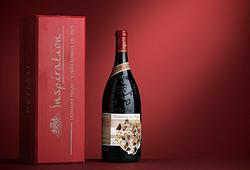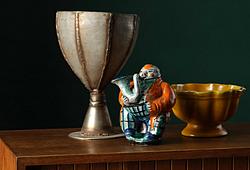A blue and white cover, Ming dynasty, Wanli (1572-1620).
Decorated with 'Hundred boys' motif, engaged in various literati pursuits including calligraphy, chess, painting appreciation and playing the qin. Around the rim five clawed dragons chasing the flaming pearl amidst cloud formations. Diameter 22,5 cm.
Restored.
Provenance
From a Swedish Collector, a notable member of the Swedish Oriental Ceramics Society who formed his collection from the early 1950's an onwards. Thence by descent.
Exhibitions
A number of similar examples exist in museum collections. A closely related box in the Philadelphia Museum of Art. Another in the Metropolitan Museum of Art was exhibited in Ming Porcelains China House Gallery, October 29, 1970, also at The Metropolitan Museum of Art, "The Four Seasons," January 28, 2006–August 13, 2006. As well as the "Arts of the Ming Dynasty: China's Age of Brilliance," exhibition, January 23, 2009–September 13, 2009.
See a similar one with the box at the Metropolitan Museum, New York, no27.119.26a,b.
Literature
Compare similar circular blue and white box with cover, Wanli mark and period, in the Jingguantang Collection part II, Christies, New York, March 20, 1997. Lot 80. The T Y Chao Family Trust, no 26. This catalogue accompanies the lot.
More information
The 'Hundred Boys' subject was a popular motif during the decorative repertoire of the Ming and Qing dynasty. It symbolises the Chinese perpetual wish for many sons.
According to Terese Tse Batholomew in Hidden Meanings in Chinese Art, San Francisco, 2006, p. 63, the 'Hundred Boys' theme has its origins in the Western Zhou dynasty when King Wen of the Zhou adopted one son in addition to his ninety-nine sons to complete the number of one hundred.




































